 |
||
|
||
| ||
 There were many unfortunate times during my college years where I sat cramped in a small desk, packed in a lecture room with over 100 students, frantically attempting to keep my note taking up to pace with my professor's lecturing speed. Enter the Livescribe Pulse smartpen, and my life would have been much easier. Although Livescribe has been running a pretty effective campaign to gain exposure, if this is the first time that you have heard of the Pulse Smartpen, we'll give you a quick overview. The Pulse smartpen is a pen with a computer inside. As you take notes, the smartpen records all of the audio being played, and then "links" the audio with your written notes. Tapping a word in the notes plays back the audio that was being said when that word was written. Bundled AccessoriesThe Pulse smartpen comes with a 100-sheet dot paper notebook, a Smartpen case, 3 fine point ink cartridges as well as 1 stylus cartridge, and a 3D audio recording headset. The ink cartridges on the Pulse are replaceable, but need to be specially bought by Livescribe. A 5-pack of ink cartridges costs $6. You can buy cartridges in red, black or blue and in fine or medium point. I'd really like to see Livescribe offer more kinds of ink for the pen, especially gel ink cartridges as my preferential pen for notes is usually a Pilot gel pen. 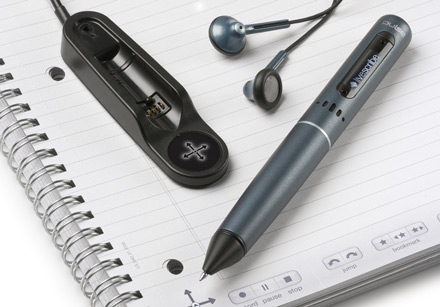 Specifications
The Pulse is powered by a Samsung ARM 9 150 MHz processor. The Infraread camera of the device is located towards the front right underneath the ink cartridge. The camera is the heart and soul of the Smartpen Pulse. It keeps track of and records everything you write. The only drawback is that in order to use any of the cool features of the Pulse smartpen, you have to use special Microdot paper, as the dots coordinate the IR camera. 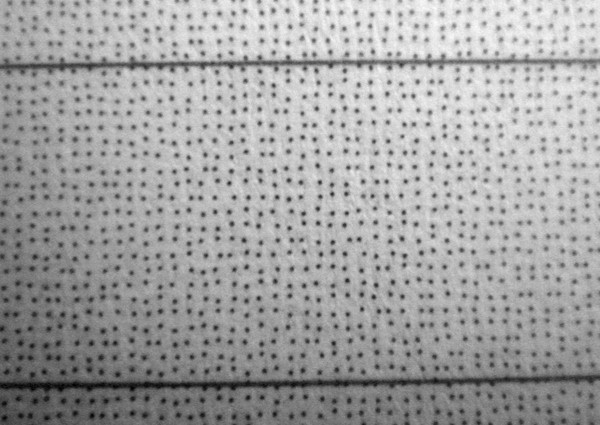 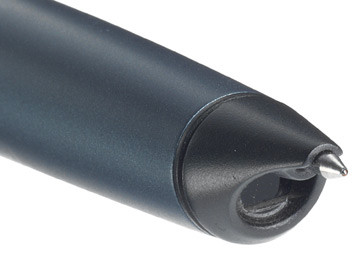 There are three main forms of dot paper, two of which need to be bought. The first form of dot paper is in a spiral bound notebook, ideal for students. The second form is a slick, little black journal, meant for professionals. The journals are available as lined or unlined. Finally, you can print dot paper for free. You do, however, have to have access to a printer that can print 600 DPI and is Adobe Photoscript-capable to print our dot paper. 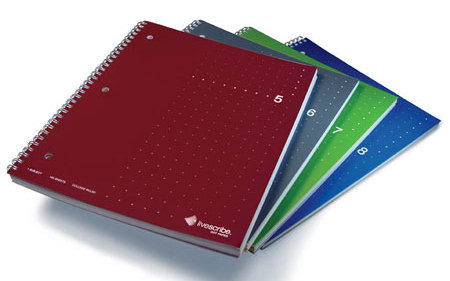 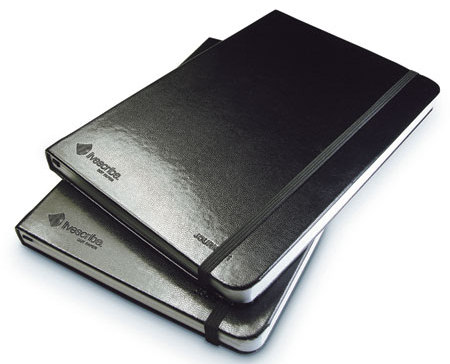 The Pulse smartpen is available in two versions; the only difference between the two is storage size. The 1GB version of the pen costs $149.95 and the 2GB version of the pen is $199.95. I'd really like to see Livescribe integrate a MicroSD card slot into the pen. Considering how small MicroSD cards are as well as their relatively low cost, it would be an immensely useful future. I just don't feel that $50 for an extra gigabyte of memory is really worth all that money. The first thing that you'll notice about that Pulse Smartpen is how sleek device is. Instead of plastic or an inferior quality exterior, Livescribe opted for anodized aluminum housing. The Aluminum helps make the pen look professional and gives it a quality, expensive feel. The housing also makes the pen very durable. I dropped the pen a couple of times in our testing, and although I wasn't crazy enough to throw it against the ground, our pen survived a few 3-4 foot falls. Since Livescribe gives a case for the smartpen in its package, I suggest making use of it for extra protection. Towards the top of the pen is a small 96x18 OLED Display. This is where the option menu of the pen appears, as well as the answer to calculator entries. The screen is bright and can be seen in sunlight, and the text is easy to read. 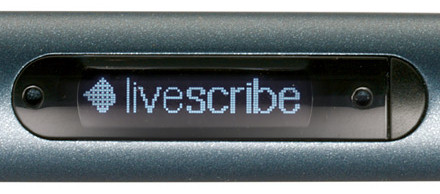 Although you might find it odd, the Pulse smartpen only has an on/off button on the pen. In fact, all controls of the pen are on Livescribe paper. We'll give a more thorough explanation later in the review, but in short, to navigate the Livescribe Pulse's option, you can draw up your controls on the special Livescribe paper, or you can use a premade printed control. Here's what the controls look like. 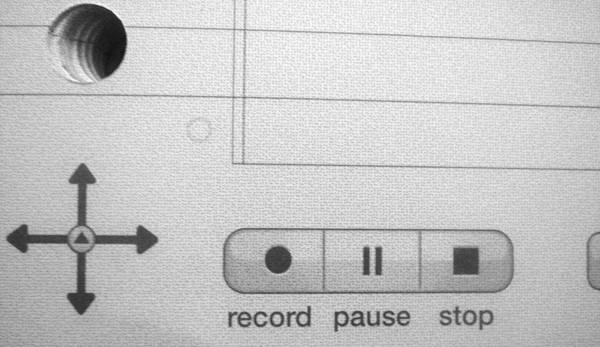 Livescribe also has a QWERTY keyboard printed in the back of the notebook. The feature isn't available for use yet, but Livescribe says it will be supported in future firmware updates. The entire device weighs only 36 grams making the pen quite light. The 0.55" width of the pen is the major design feature to keep in mind when judging whether the Pulse smartpen works for you. The width makes the smartpen awkward to hold at first, but after a little time you should be able to get used to it. In my testing the size of the pen didn't really affect my writing negatively and I was able to write in the same scripts I usually write in. The pen is wider towards the bottom, but slims out slightly as it reaches the area where the pen is gripped. 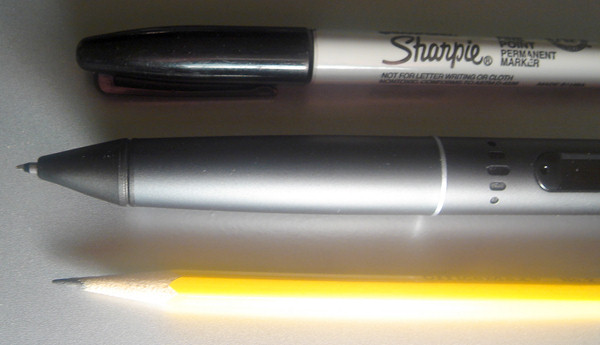 To begin taking notes, you just need to tap the "record" control on the bottom of the dot-paper. Then, you simply begin writing and the pen automatically records and links audio to what is being written. You can add bookmarks to your notes while you are writing them or when you are reviewing the notes afterwards. In addition, you can adjust playback speeds of the notes audio and scan through the notes using a seek bar. Even cooler, tapping on any word in the notes automatically begins playing back the audio when that word was written. All of this is done without the help of a computer. Overall, for notetaking the Pulse smartpen is simply amazing. For students and professionals the ability to replay what was being said when a word was written is an excellent feature, especially if the concept wasn't fully understood or you just weren't paying attention the first time around. The Pulse smartpen works completely as advertised when it comes to this feature. Other than taking notes, the Pulse smartpen has some other neat abilities. All dot-notebooks have virtual paper calculators printed on the back. By tapping the numbers and functions on the notebook, and pressing the equal operator, the answer appears on the pen's OLED screen. The smartpen also has a "paper piano", which although isn't very useful, is a fun and neat application. There is also a limited translator. To work it, just start the translator application, write a word, and it will be translated to the desired language. Audio quality can be adjusted to three quality levels, meaning you have to decide to tradeoff between audio file size and quality. Sensitivity of the microphone can be adjusted to depending on the environment you are in. If you're sitting in a lecture hall and you end up in the back row, you can whip out the 3D recording headset of the Livescribe Pulse, sling in around your neck, and you should be able to still record the lecture. In my testing, I was able to record audio 30 feet away from the source with the headphones. On a slightly different topic, the 3D audio feature of the Livescribe Pulse is fun to use, and really helps bring the audio to life when reviewing notes. Each earpiece has a small microphone in it, and so audio is recorded with proper positioning of where sounds are coming from. It's a very thoughtful and neat feature to have and makes the recorded audio sound much less flat. SoftwareTo move notes off of the Pulse smartpen and onto a PC, you'll need to have Livescribe Desktop installed. This software can be downloaded from the Livescribe website. When I first attached my Pulse smartpen to the PC, I was presented with a slew of updates to the pen. The update process was slow because many previous files were first uninstalled from the pen, and then completely reinstalled with updated versions. We've tested the Livescribe desktop on three different versions of Windows: Windows XP, Vista, and the new Windows 7 Beta. It works well on all three. The user interface of Livescribe Desktop is sleek and clean, but it unfortunately feels buggy and is slow to navigate. In addition, there are times when the software doesn't properly sync with the pen. Once you do get the Pulse smartpen to sync with the PC, all note sessions are copied to the PC. You can then delete sessions from the pen if you want to free up space. Organization in Livescribe Desktop is rather simplistic. The main page of Livescribe desktop lists all of the current notebooks. All notes are organized in Livescribe Desktop according to notebook. Notebooks can be named, renamed, and once used, archived. I understand the iTunes approach that Livescribe is going for, but I'd really like the company to add some more organizational features. Namely, I want to be able to create my own "notebooks" and be able to drag and drop pages across these notebooks. Basically, with the current setup of Livescribe Desktop, you can only have a notebook if you physically have a notebook. With the PC freeing users from many of these limitations, why not add these extra features. By double clicking on a notebook, you can view all pages of the notebook in thumbnail form. If you have a slower computer, the software will most likely slow down here to load the thumbs. Double clicking on a page begins playback of the notes. As the audio playback progresses, the text turns from pale green to dark green. Clicking on a specific part of the notes jumps the audio to what was being said at that part of the notes. The most useful feature of Livescribe Desktop is the ability to search written notes. Simply typing the word you're looking for in the search bar and pressing enter will pull up the results from all of your notes sessions. The handwriting recognition works very well and can "read" a variety of writing styles, including slanted and cursive writing. This is all the more amazing since my handwriting isn't the neatest in the world. The software, though, does have difficulty picking up chicken scratch, but who doesn't? Notes taken with the Pulse smartpen can be uploaded online and shared with friends. Presentation of the notes is exactly the same as the presentation in the software, except this time it's in a browser window. Here is an example of a recorded session posted online. Clicking on the Pulse Smartpen in the upper right of the software takes you to the Smartpen Manager screen. This page breaks down how much space you have left on the Pulse and also allows you to check for updates. Clicking on the Sessions button takes you to a screen with all of the audio sessions listed out. It tells the date the session was recorded, and the amount of room it is taking on the pen. Third party applications are also available for the Pulse. This feature alone makes the pen very exciting, since it opens up a whole world of possibilities. According to Livescribe, 1,700 developers are working on applications for the device. Availability of applications starts in 2009. An application that converts Livescribe written notes to text is already available for $29.99. I'd prefer having a free option from Livescribe available built directly into the desktop software, but it's better than nothing. Final WordsThe Livescribe Pulse smartpen is an excellent device for notetakers. If you take notes often, the Livescribe Pulse is a must-have. The largest drawback of the Pulse smartpen has to be the desktop software. I hope to see Livescribe further optimize its performance and stability. The thickness of the pen is another issue, and if you have small hands it might be awkward writing with the pen. The best comparison to writing with the Pulse smartpen is writing with a Sharpie. Other than its width, our largest dislike is the Pulse smartpen's limited memory. I would have liked Livescribe to have incorporated a MicroSD card slot so that users could expand the pen's memory. The most important step in making a purchasing decision regarding the Pulse smartpen is defining whether you actually need it. Beyond taking notes, the Pulse smartpen's uses are quite limited, so it all depends on the frequency at which you take notes and refer back to them. If you are a heavy notetaker or are a student, I highly recommend the Pulse smartpen to you.
|
Platform · Video · Multimedia · Mobile · Other || About us & Privacy policy · Twitter · Facebook Copyright © Byrds Research & Publishing, Ltd., 1997–2011. All rights reserved. |